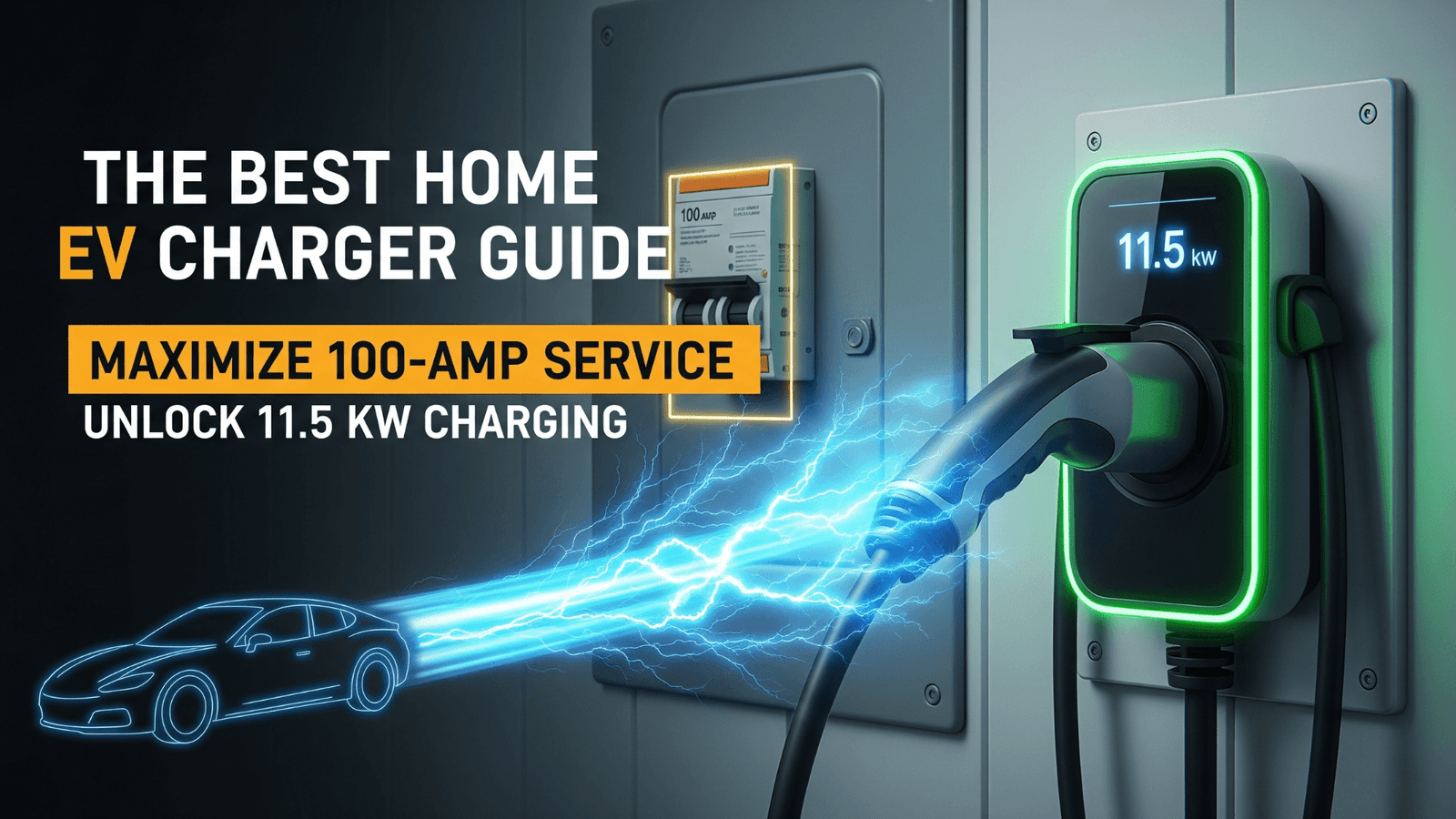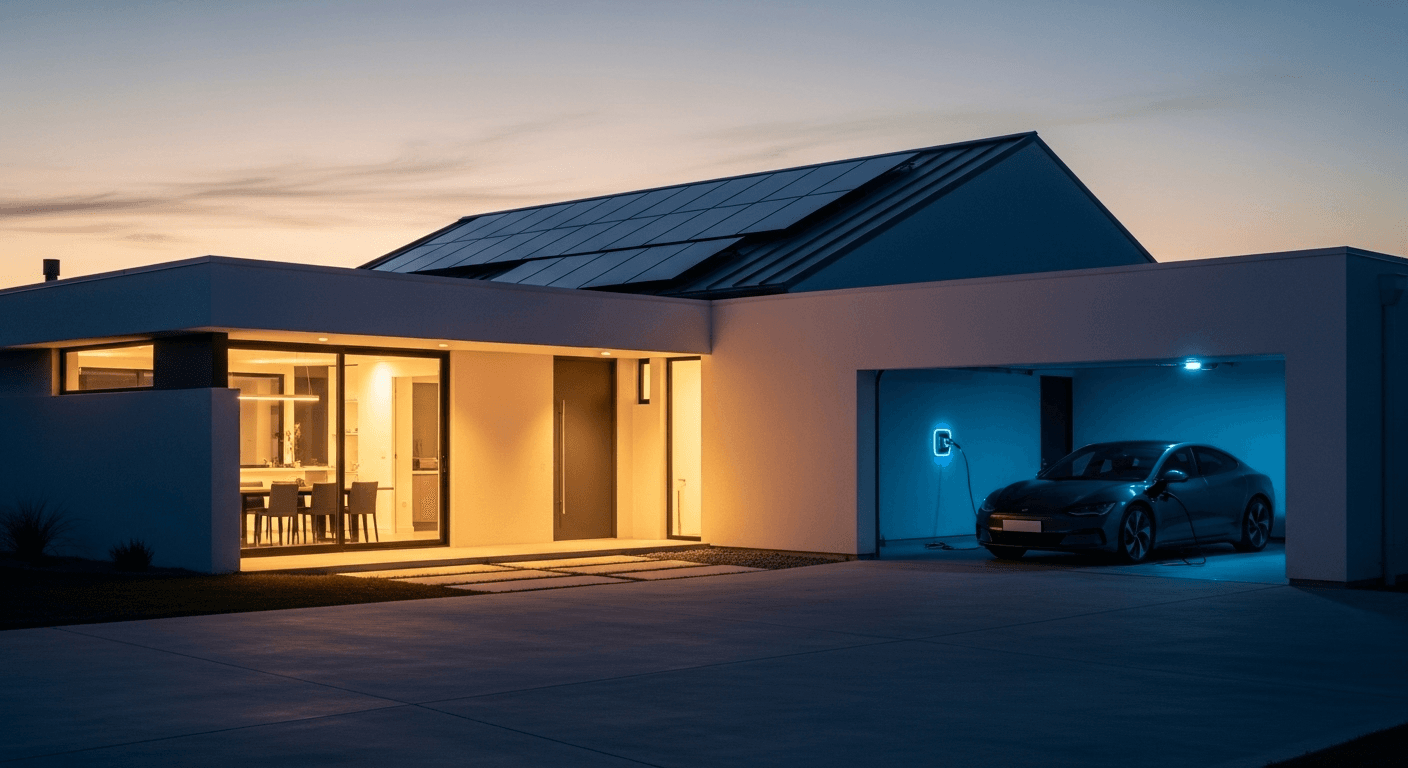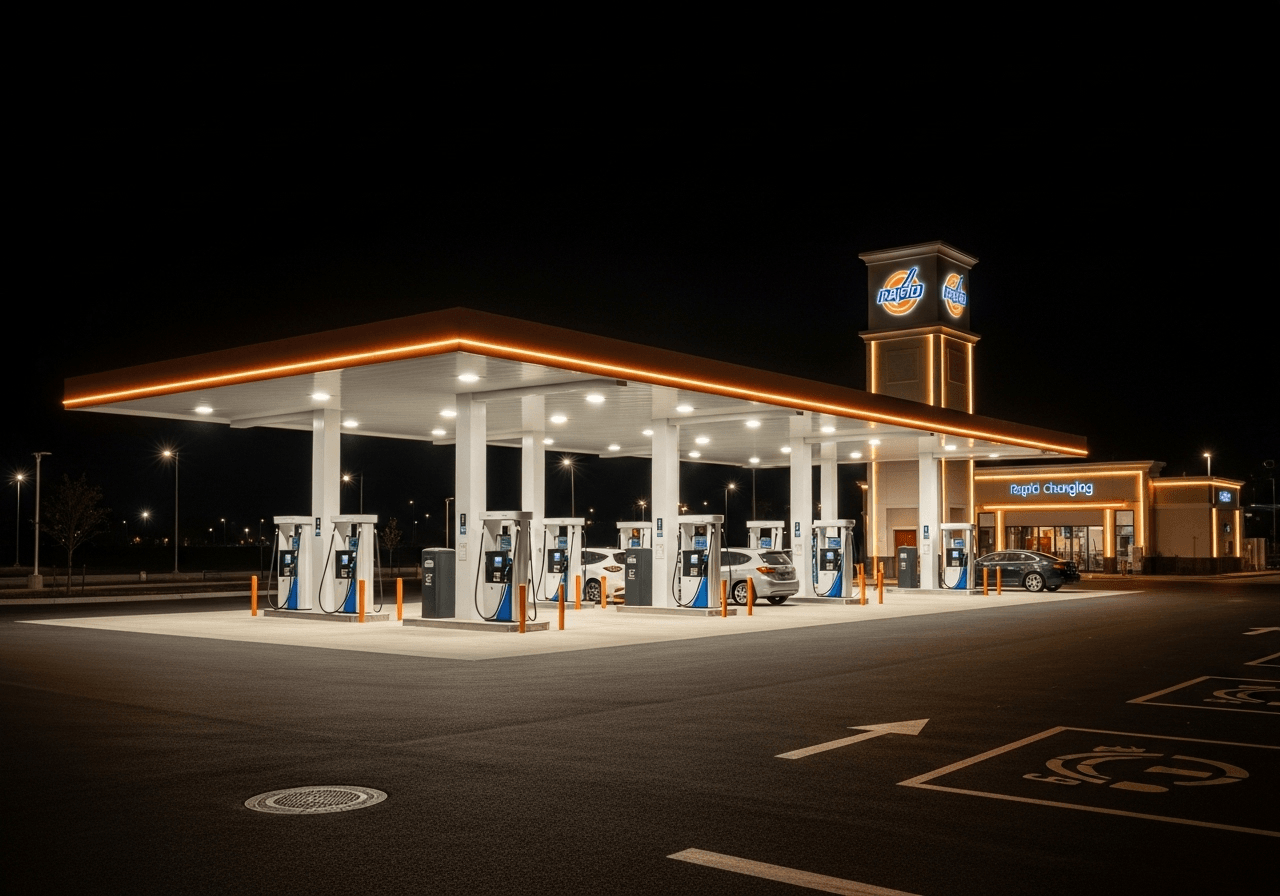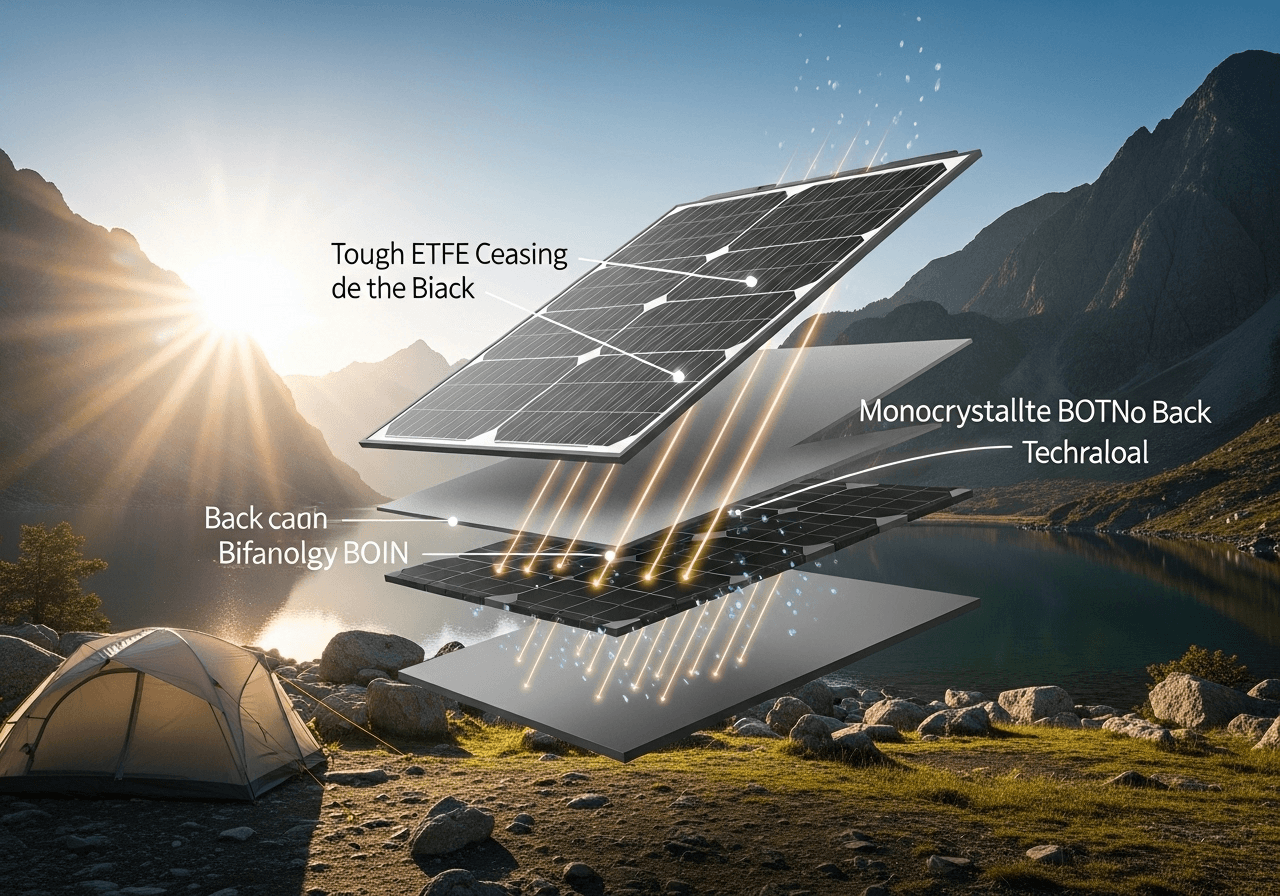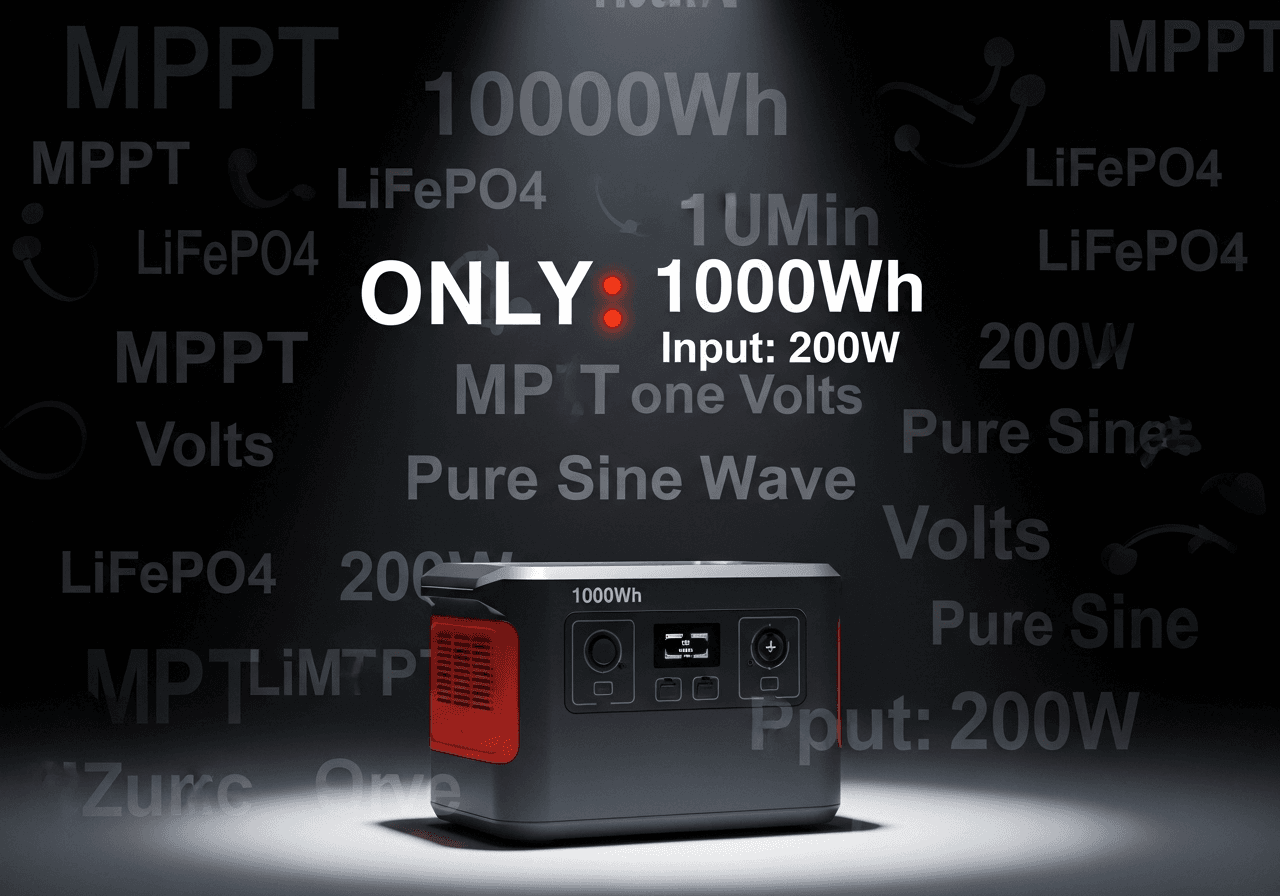For homeowners, the most critical decision when going electric is not the car—it’s the charger. The market is saturated with options, but the true cost lies hidden within your home’s electrical panel.
The best Level 2 charger on the market is useless if your home can’t power it. This guide provides the definitive, expert-backed strategy for choosing the best Level 2 charger for your needs, avoiding unnecessary panel upgrades, and maximizing your Return on Investment (ROI).
⚡️ EXPERT ADVICE: Your electrician will tell you to upgrade your panel. As an engineer, my advice is simple: **Don’t. The solution to 11.5 kW charging is software, not a costly new 200-Amp panel.**
Home Charging Readiness & Risk Assessor
Determine your panel’s risk level before consulting an electrician.
Your Electrical Readiness
1. The Real Cost: Charger Price vs. Installation Cost
The biggest mistake a homeowner makes is focusing only on the charger’s purchase price (typically $400–$1,200). In reality, the hardware is a minor expense; the installation is the variable cost that determines your total outlay.
| Component | Typical Cost Range (U.S. Average) | Cost Type | Vecharged Cost Risk |
|---|---|---|---|
| Charger Hardware | $400 – $1,200 | Fixed (Varies by brand/amperage) | CAVEAT: Subject to geographic limits (see below). |
| Simple Installation | $500 – $1,500 | Variable (Requires dedicated 240V circuit) | Moderate (Standard electrician job). |
| Panel Upgrade (If Needed) | $1,500 – $3,000+ | Variable (Ranges from $1,300 to $6,000 regionally for a 200A) | HIGH (The single largest hidden cost). |
| Permits & Inspection | $50 – $300 | Fixed (Mandatory for safety/code) | Low (But required for safety and warranty). |
MANDATORY TAX CREDIT CLARIFICATION (§30C)
The federal $1,000 Section 30C Tax Credit for home charger installation is NOT universally available.
To qualify, your principal residence must be located in an eligible census tract, defined as either a low-income community or a non-urban (rural) area. If you live in an established metropolitan suburb or affluent urban center, you likely do not qualify.
TIME SENSITIVITY: Check the June 30, 2026, Deadline
The deadline for the §30C credit is June 30, 2026. The property must be placed in service (installed and operational) by this date to qualify. Do not delay installation if you plan to claim this incentive.
What is the lifespan of a home EV charger?
Most Level 2 chargers have a lifespan of 7–10 years, with warranties typically covering 3 years. The longevity of the unit is often less critical than the lifespan of your installation investment, which should last 20+ years.
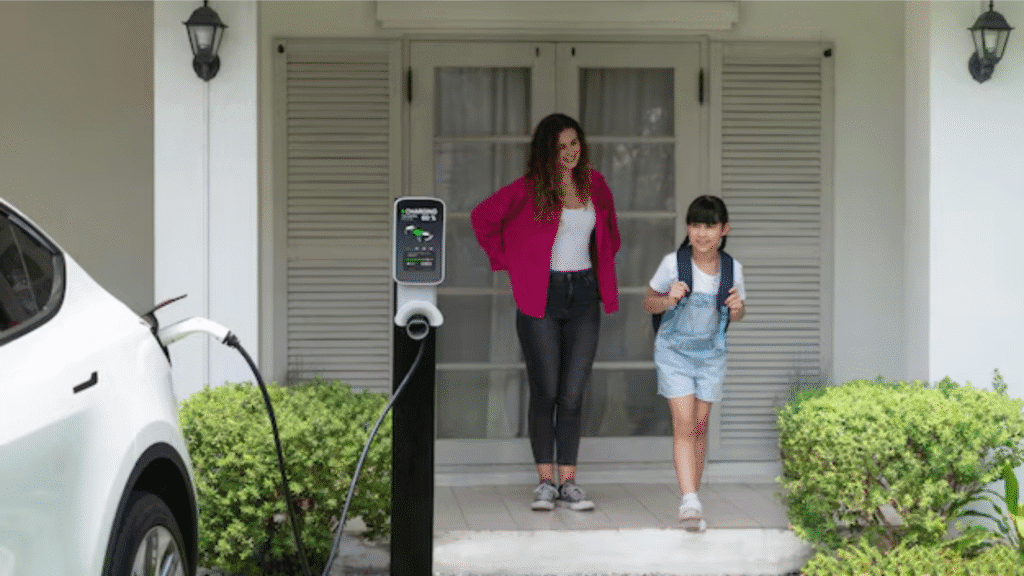
The Daily Charge: Home EV charging integrates seamlessly into the family routine, ensuring the vehicle is always ready for the morning commute and school run.
2. Speed and Power: Debunking the 22kW Myth
Home charging speed is not determined by the charger alone; it is limited by your car and your home’s electrical supply.
Can I install a 22kW charger at home?
The 22kW charging standard is a three-phase power requirement, which is common in Europe.
- The U.S. Reality: The practical maximum for a residential charger in the U.S. is 11.5 kW (48 Amps on a 60 Amp breaker).
- The Feasibility Nuance: Installing a 22kW charger is technically possible only if your home already has a three-phase power supply or you pay for an extremely costly utility service upgrade. For all practical purposes, a 7–11 kW charger is the best and most cost-effective choice.
Technical Deep Dive: The 80% Rule
What is the 80% rule for EV charging?
The 80% Rule is a critical battery longevity and efficiency strategy. It dictates that you should rarely charge your lithium-ion battery above 80% for daily use.
- Longevity (Battery Health): Charging the final 20% pushes high voltage into the battery, generating excess heat and stress that accelerates chemical degradation, thus reducing the battery’s overall lifespan.
- Efficiency (Time & Money): The charging curve tapers significantly after 80%. That final 20% can take as long as the first 80%, wasting time at public chargers and increasing your electricity cost.
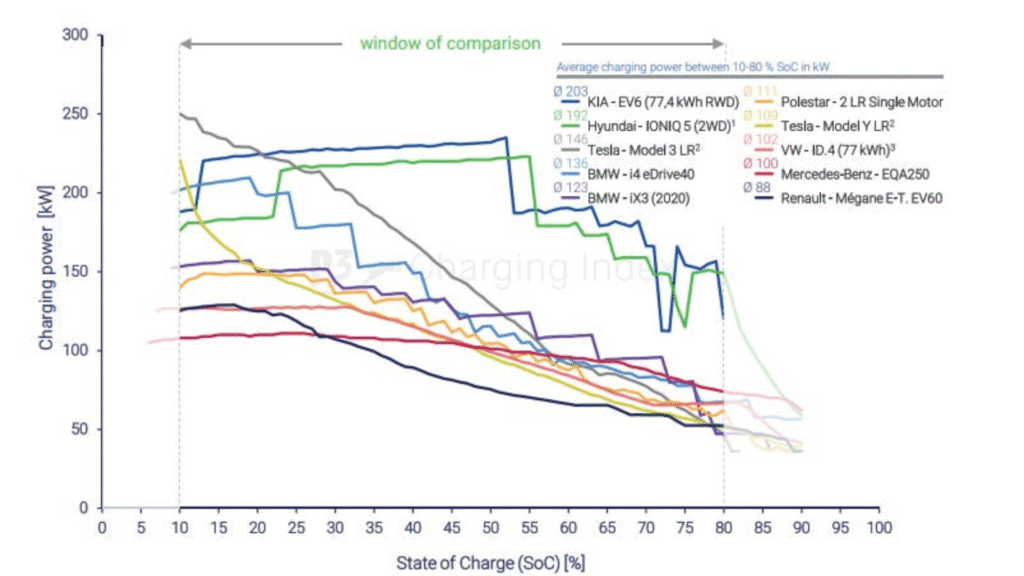
The Reality of Fast Charging: This industry-standard graph compares the charging curves of leading EVs, revealing the average power delivered between 10% and 80% State of Charge (SoC).
3. Best-in-Class Chargers: Features vs. Price
Which are the top 5 EV charger manufacturers?
The “best” charger is the one that manages your home’s energy. We prioritize Smart Chargers with Load Management capability, which are essential for avoiding costly panel upgrades.
| Charger Model | Key Feature / Vecharged Verdict | PAA/PASF Relevance |
|---|---|---|
| ChargePoint Home Flex | Ecosystem Leader. Excellent app integration and networking for users who also charge publicly. (Highest user trust score). | *ChargePoint Home Flex, Best EV Charger* |
| Emporia EV Charger | Smart Home Integration. Best value for load management; automatically balances power between your car and other major appliances (A/C, oven) to avoid tripping the main breaker. | *Emporia EV charger, Load Management* |
| Tesla Wall Connector | Seamless Connectivity. Unmatched reliability and integration for Tesla owners, with optional solar charging integration. | *Best home EV charger united states tesla* |
| Wallbox Pulsar Plus | Compact & Power Sharing. Offers small size and robust power-sharing features, ideal for multi-EV garages and load balancing. | *Wallbox, Installing electric vehicle charging station at home* |
| Grizzl-E Classic | Durability & Value. Non-smart, robust, high-amperage, and built to withstand harsh weather. The best value if smart features aren’t needed. | *Grizzl-E, Best Level 2 EV charger for home* |
4. Avoiding the Hidden Panel Upgrade Cost
The biggest differentiator between a simple $950 installation and a $5,500 project is your electrical service panel.
- The Threat: If your home has a 100-amp panel (common in older homes) and you install a 40–50 Amp circuit for an EV, you risk overloading the panel and failing inspection.
- The Vecharged Solution: Load Management: Instead of paying $1,500–$2,500+ for a full 200-amp panel upgrade, invest $400–$800 in a Load Management Device (like those integrated by Emporia or Wallbox). This device dynamically slows your EV charging when the A/C or dryer is running, ensuring you stay under the panel’s capacity limit.
Actionable Takeaway: Your Budget Scenario
Use our calculator to get a realistic cost forecast based on your home’s needs:
Home Charger Cost & Installation ROI Calculator
Audit the true cost of Level 2 charging versus public charging.
1. Your Upfront Installation Cost
2. Annual Operating Savings
3. Your Total Cost & Payback
Rahul is a core expert on the Vecharged team. With over 5 years of hands-on experience in e-mobility, embedded engineering, and consumer battery technology, Rahul is dedicated to bringing technical clarity to your most significant clean energy investments.

